NGC Ancients: Coins Featuring the God Janus, January's Namesake Deity
Posted on 1/16/2024
By
Ben Wallace
NGC Ancients Grader
Janus was a primordial god in ancient Roman religion, meaning he’d existed since the start of time, even predating the more familiar Roman gods. He was the god of beginnings and endings and ruled movement, transition and change, making him one of the most important of all Roman deities. The month of January is named after him since it was the beginning of the year, and his main religious celebration was held during that month.
Now, we’ll look at some interesting Roman coins featuring the god Janus.
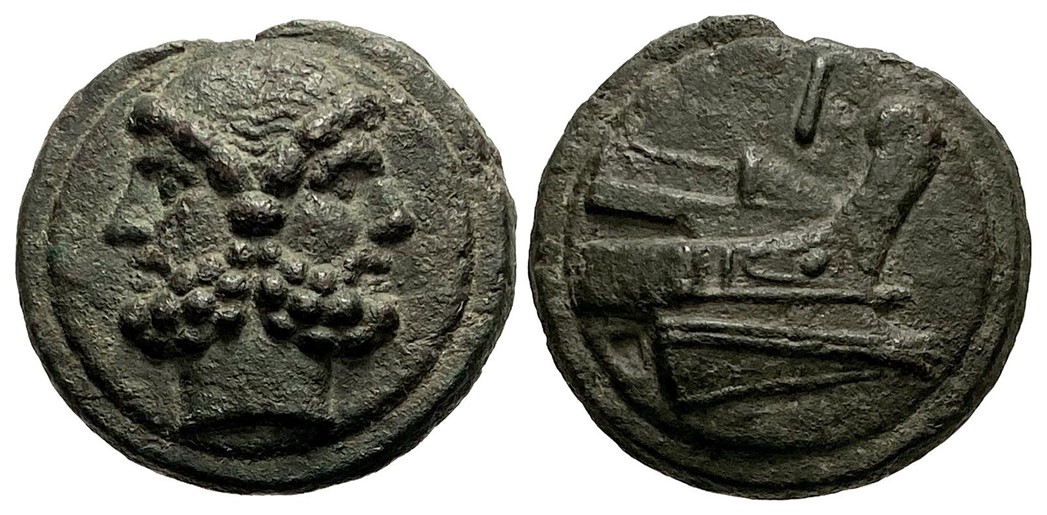 |
This Roman cast bronze as from the ‘aes grave’ series is a massive coin weighing 260 grams. Made c.225 to 217 B.C., it shows the bearded head of Janus opposite the prow of a war galley. The early bronzes of Rome often were crude, making this fine exceptional example stand out.
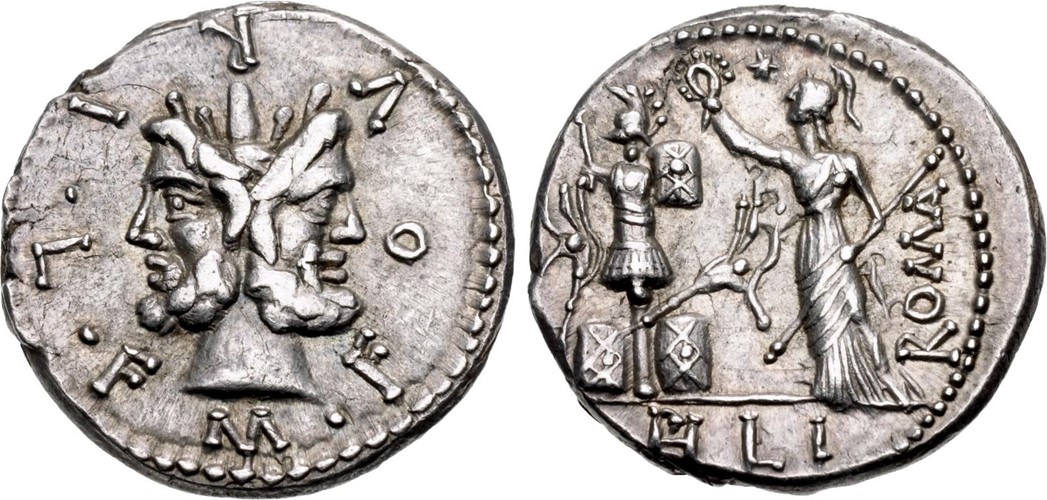 |
Another portrayal of Janus occurs on this silver denarius of the moneyer M. Furius L.f. Philius, made at the Rome mint c.120 B.C. The reverse shows the state goddess Roma crowning a trophy of Gallic arms.
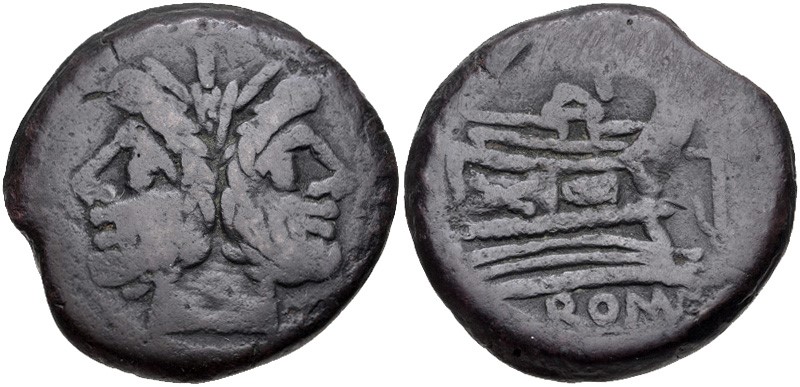 |
Though the portraits of Janus often are attractive, other times they are simplistic, as seen on the following two examples. The first — above — is a copper as issued c.169 to 158 B.C. Its Janus portrait is of primitive style.
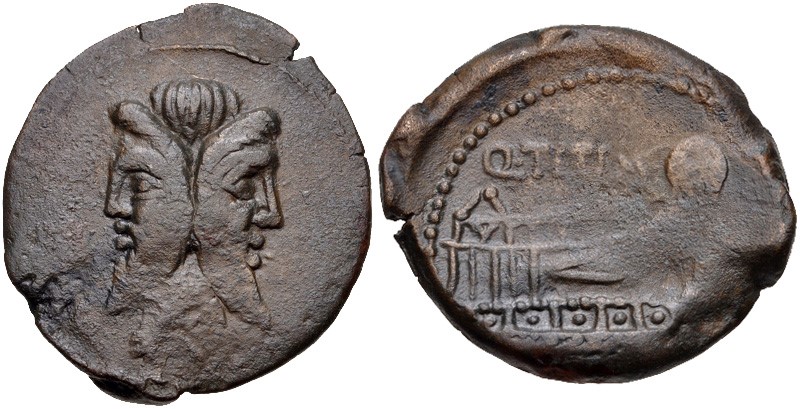 |
This copper as, struck c.90 B.C. for the moneyer Q. Titius, features a striking and unusual portrait of the god.
It’s interesting that despite the god’s importance, and his frequent appearance on bronzes of the Roman Republic, Janus seldom appears on coins of the Roman Empire. Below are a few notable exceptions.
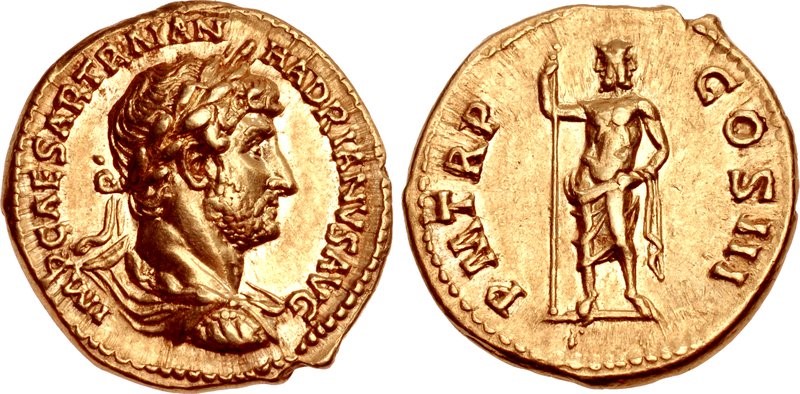 |
This attractive gold aureus portrays the emperor Hadrian (A.D. 117 to 138). Its reverse shows the standing figure of Janus holding a scepter.
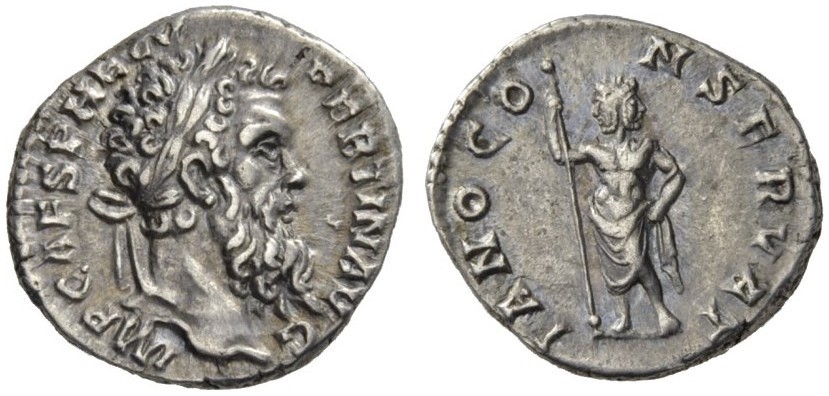 |
A nearly identical image of the god appears on the reverse of this silver denarius produced during the brief reign of the emperor Pertinax (A.D. 193).
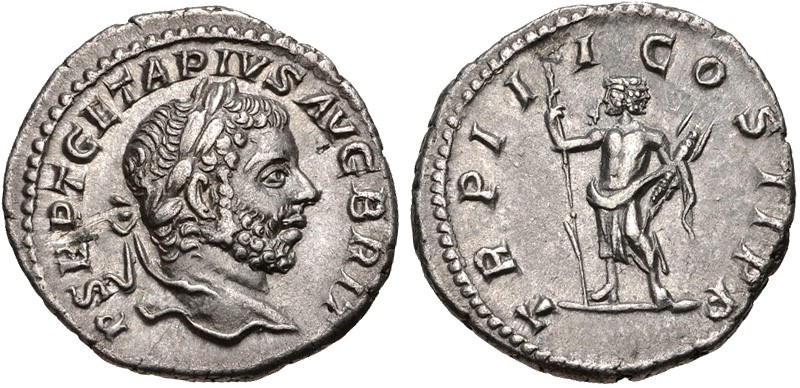 |
A more elaborate image of Janus occurs on this silver denarius issued for the emperor Geta (A.D. 209 to 211). Here, the god holds both a spear and a thunderbolt.
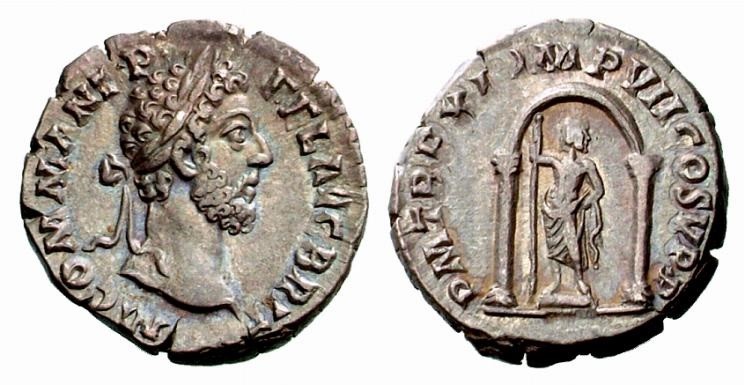 |
Our final image of Janus occurs on a silver denarius of the emperor Commodus (A.D. 177 to 192). The god is shown just as he’d appeared on the aureus of Hadrian and the denarius of Pertinax, though he now stands within a shrine.
Janus had many shrines and gatehouses dedicated to him in Rome. His main temple, located near the Roman Forum, played a unique and interesting role. The gates of the temple could only be closed when Rome was not at war. As one might imagine, this didn’t happen very often, and it was worth celebrating the few occasions on which ‘universal peace’ was achieved.
The best-known examples of Janus’ temple occur on coins of the emperor Nero (A.D. 54 to 68).
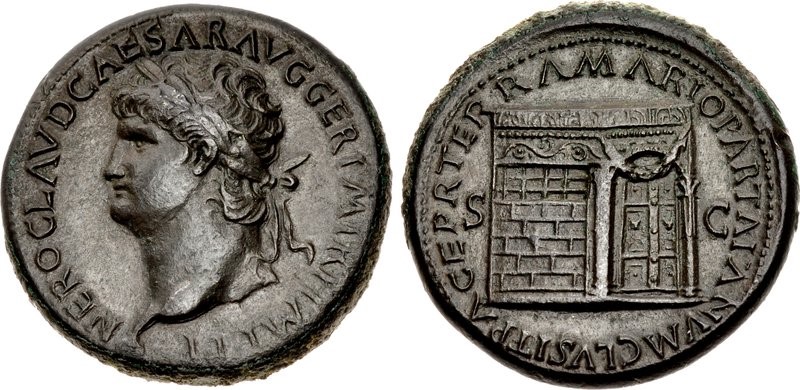 |
This orichalcum sestertius of Nero shows the ornate temple of Janus with the doors closed.
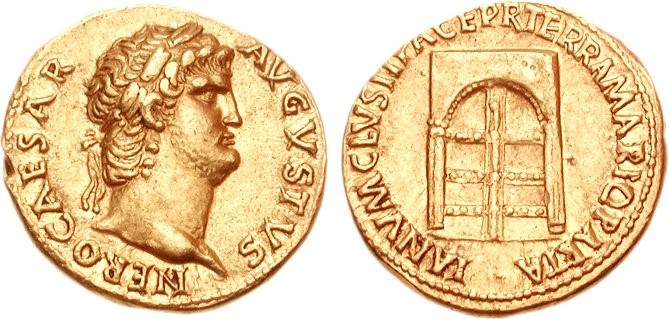 |
The reverse of this gold aureus of Nero also features the temple of Janus with closed doors, though it’s shown directly rather than at an angle.
The accompanying inscription on both coins, PACE P R TERRA MARIQ PARTA IANVM CLVSIT, means “after peace has been procured for the Roman People by land and by sea, the doors of Janus have been closed.”
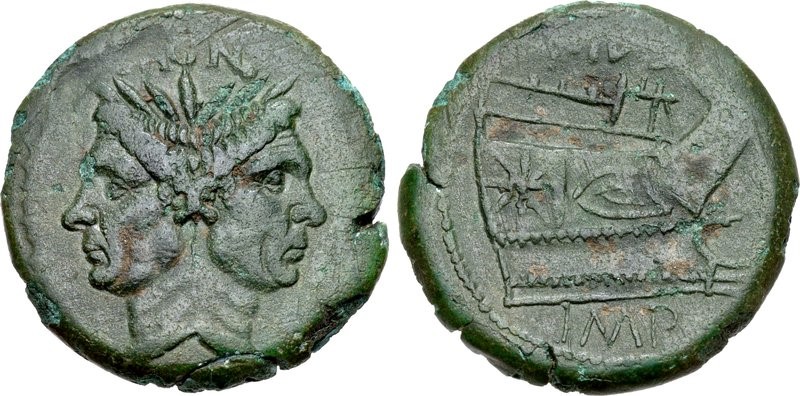 |
On some occasions the ‘janiform’ style of portrait was applied to subjects other than Janus. Shown above is one example: a copper as struck c.42 to 38 B.C. at a Sicilian mint which honors the Roman warlord Pompey Magnus and incorporates his facial features into a double-facing head.
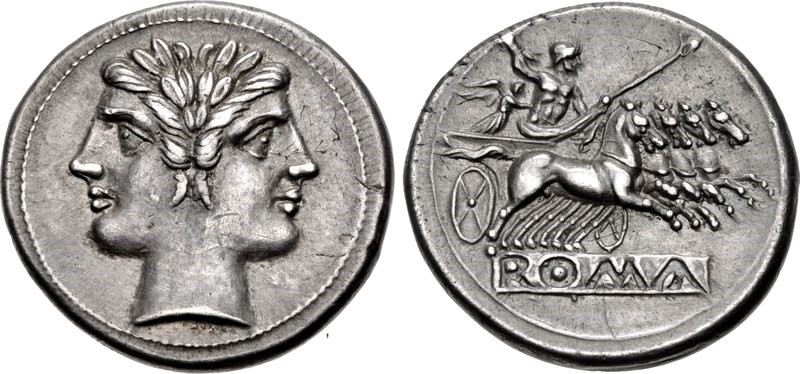 |
The ‘janiform’ portrait on the silver quadrigatus, above, struck c.225 to 212 B.C., is controversial. On this famous type, scholars disagree about who is shown: it’s often described as a youthful and clean-shaven Janus, but more likely it’s the Dioscuri (Castor and Pollux), mythological twin half-brothers who the Romans credited with their victory at the Battle of Lake Regillus early in the 5th Century B.C.
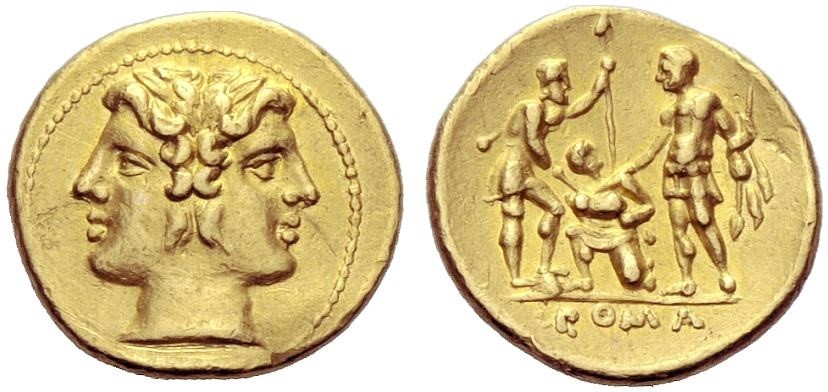 |
Issued contemporarily with the quadrigatus above, this gold half-stater was made c.216 B.C., a product of the Second Punic War (218 to 201 B.C.). The previous coin showed on its reverse Victory and Jupiter in a fast quadriga, whereas this piece features an oath-taking scene in which Rome confirms ties with its Italian allies, who proved essential to Rome’s hard-fought victory over Hannibal and the Carthaginians.
Images courtesy of Classical Numismatic Group and Numismatica Ars Classica
Stay Informed
Want news like this delivered to your inbox once a month? Subscribe to the free NGC eNewsletter today!
